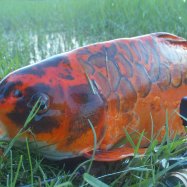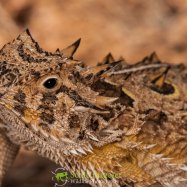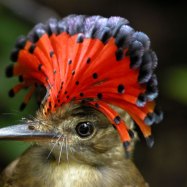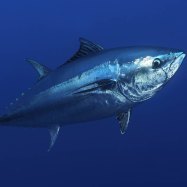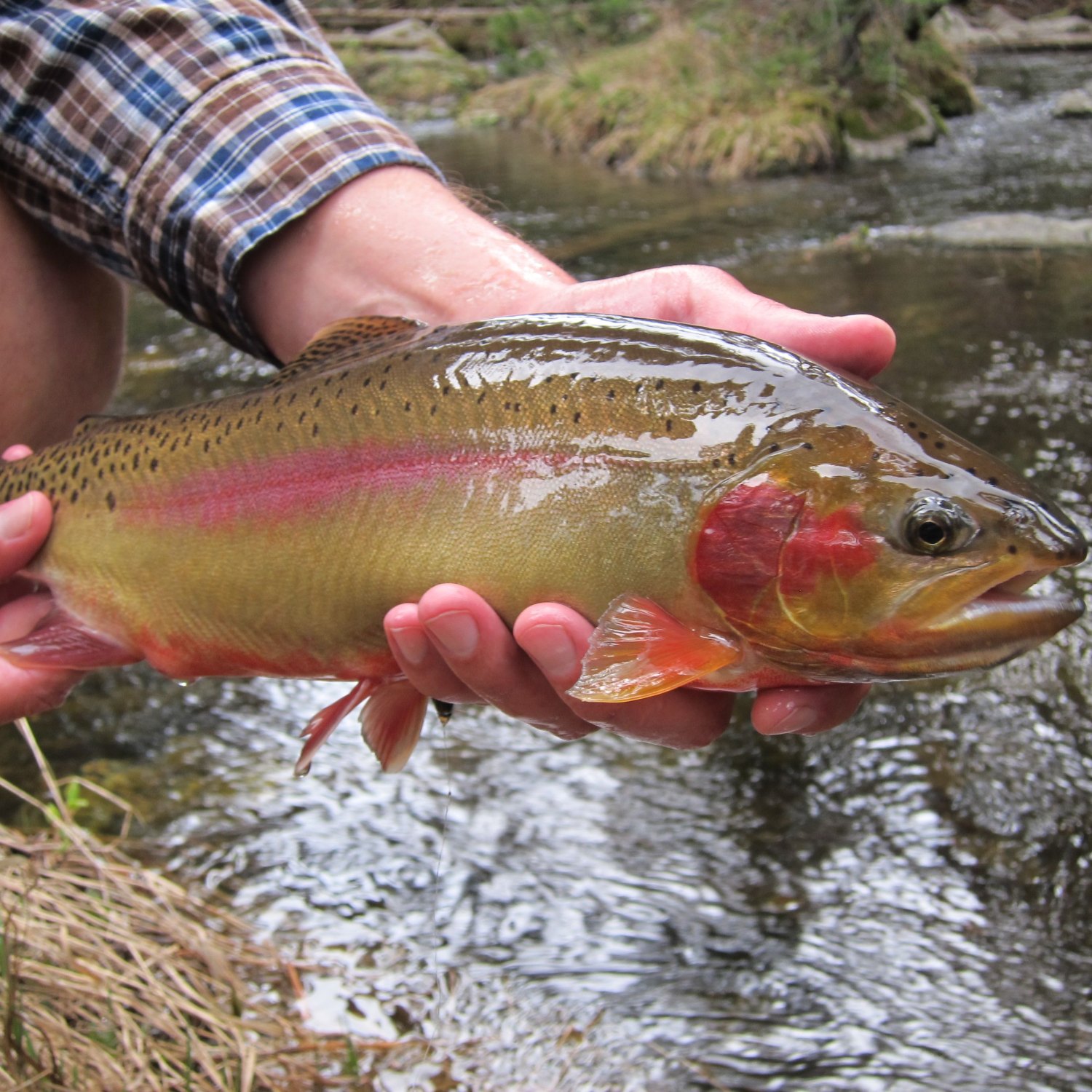
Golden Trout
6 to 12 inches (15 to 30 cm)
The Golden Trout, with its vibrant colors and streamlined body, is a popular catch for anglers. This beautiful fish can grow up to 12 inches in length and can be found in high elevations of the Sierra Nevada mountains. Belonging to the Salmonidae family, the Golden Trout is a prized possession for any fishing enthusiast. #GoldenTrout #SierraNevada #Fishing.
Animal Details Summary:
Common Name: Golden Trout
Kingdom: Animalia
Habitat: Mountain streams and lakes
The Majestic Golden Trout: A Gem in the Sierra Nevada Mountains
If you ever find yourself trekking through the rugged, picturesque Sierra Nevada mountains, keep an eye out for a flash of golden-yellow in the crystal-clear lakes and streams. You may just be catching a glimpse of the stunning golden trout, a true gem of American wildlife.Golden Trout, scientifically known as Oncorhynchus mykiss aguabonita, is a strikingly beautiful freshwater fish found exclusively in the Sierra Nevada range in California. With its bright golden-yellow body adorned with vibrant red and black markings, it is often referred to as the "jewel of the High Sierra Golden Trout."
But the beauty of this fish is not the only reason it has captured the hearts and minds of both anglers and naturalists for centuries. Golden Trout is also a fascinating species with a unique habitat, feeding method, and evolutionary history.
So, let's dive deeper into the world of golden trout and discover what makes this fish so special.
The Kingdom of Golden Trout: Animalia
Like all living organisms, golden trout belongs to the kingdom Animalia. This means that it is a multicellular, eukaryotic organism that feeds on other living organisms.As a member of this kingdom, golden trout shares many characteristics with other animals, such as having a nervous system, muscles, and the ability to move voluntarily. However, it also possesses some exceptional qualities that make it stand out among other species.
A Chordate Covered in Bright Golden Scales
Golden Trout belongs to the phylum Chordata, which includes all animals that have a notochord (a flexible rod-like structure) at some point in their lives. This makes them distinctly different from other invertebrates Gorilla.Interestingly, while golden trout may appear to be primarily golden-yellow in color, its scales have a unique iridescent quality. This means that they appear golden in different lights, making this fish truly shimmering and stunning.
A Streamlined and Cylindrical Actinopterygian
The class Actinopterygii includes all ray-finned fish and accounts for nearly half of all vertebrate species on the planet. The name is derived from the Greek words "actinos," meaning ray, and "pterygius," meaning wing or fin.Golden Trout is a perfect representation of this class, with its streamlined and cylindrical body shape, propelled by its remarkable fin rays. These fins are strong and flexible, allowing the fish to maneuver swiftly through fast-flowing streams and rivers.
Part of the Salmonidae Family
Salmonidae is a diverse family of fish known for their anadromous lifestyle, which means that they migrate from freshwater to saltwater for different stages of their life cycle.While golden trout may not exhibit this behavior, it is still a member of this family due to its evolutionary history and physical characteristics, such as the presence of a soft rayed dorsal fin and adipose fin.
Aquatic Masters of the Sierra Nevada Mountains
A Habitat Unlike Any Other
While golden trout may have an impressive scientific classification, its unique habitat is what truly sets it apart from other fish species. This fish is entirely endemic to the Sierra Nevada mountains, which means that it cannot be found anywhere else in the world.Within this range, golden trout is primarily found in cold, high-altitude mountain streams and small lakes, with elevations above 6,890 feet (2,100 meters). Its preference for cool, clear waters has earned it the nickname "sky fish."
This delicate ecosystem is also home to other rare species, making it a vital part of the local biodiversity. However, human activities and climate change have significantly impacted this habitat, posing a threat to the survival of golden trout and other creatures living there.
A Carnivorous Diet Fit for a Predator
Golden Trout is a carnivorous species, meaning that it feeds on other animals. In its natural habitat, its diet consists primarily of aquatic insects, crustaceans, and small fish.As an opportunistic predator, golden trout is known for its ability to adapt its feeding habits according to the available food sources in its environment. This makes it a vital part of the food chain in its delicate mountain ecosystem.
A True California Native
Golden Trout is an iconic species for California and the Sierra Nevada mountains. It is the official state freshwater fish of California, and its stunning appearance has earned it a spot on the California state flag.This native fish has been an essential part of the local culture and economy for centuries, with many anglers seeking out the challenge of catching these prized fish in their natural habitat. However, overfishing and habitat destruction have threatened the populations of golden trout, leading to conservation efforts to protect this species.
A Species in Need of Protection
Golden Trout may be a sight to behold, but unfortunately, its population has significantly declined over the years. The primary reason for this is the destruction of its natural habitat through human activities, such as logging, mining, and the construction of dams.The fish's small, isolated populations also make them vulnerable to environmental factors like droughts and flooding. Invasive species, such as non-native trout, also pose a significant threat, as they compete for resources and can interbreed with golden trout, diluting their genetic purity.
To protect this threatened species, conservation efforts are ongoing in the Sierra Nevada mountains. This includes restoring and preserving their natural habitat, limiting fishing in designated areas, and introducing captive-bred fish to boost wild populations.
An Enduring Species with a Bright Future
Despite its challenges, golden trout has managed to survive for thousands of years in the high elevations of the Sierra Nevada mountains. Its unique adaptations, stunning coloration, and vital role in the ecosystem make it a truly remarkable species that deserves our protection and admiration.If you have the opportunity to see a golden trout in the wild, consider yourself lucky. It is a rare experience that will leave you in awe of this majestic and resilient fish, a true gem in the Sierra Nevada mountains.

Golden Trout
Animal Details Golden Trout - Scientific Name: Oncorhynchus mykiss aguabonita
- Category: Animals G
- Scientific Name: Oncorhynchus mykiss aguabonita
- Common Name: Golden Trout
- Kingdom: Animalia
- Phylum: Chordata
- Class: Actinopterygii
- Order: Salmoniformes
- Family: Salmonidae
- Habitat: Mountain streams and lakes
- Feeding Method: Carnivorous
- Geographical Distribution: Sierra Nevada mountains in California
- Country of Origin: United States (California)
- Location: High elevations in the Sierra Nevada mountains
- Animal Coloration: Bright golden-yellow body with red and black markings
- Body Shape: Streamlined and cylindrical
- Length: 6 to 12 inches (15 to 30 cm)
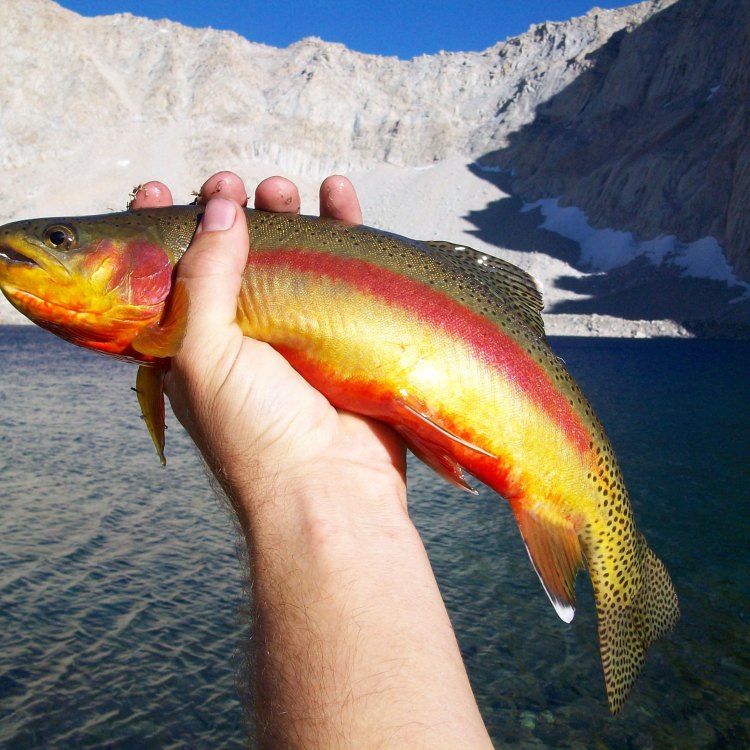
Golden Trout
- Adult Size: 6 to 12 inches (15 to 30 cm)
- Average Lifespan: 5 to 7 years
- Reproduction: Sexual
- Reproductive Behavior: Spawning occurs in late spring or early summer
- Sound or Call: No specific sound or call
- Migration Pattern: Occurs within the same water system
- Social Groups: Generally solitary
- Behavior: Active during the daytime
- Threats: Habitat degradation, competition with non-native fish species, climate change
- Conservation Status: LC (Least Concern)
- Impact on Ecosystem: Important prey species for larger fish and birds
- Human Use: Popular game fish
- Distinctive Features: Golden coloration with red and black markings
- Interesting Facts: Golden Trout is the official state fish of California
- Predator: Birds of prey, larger fish
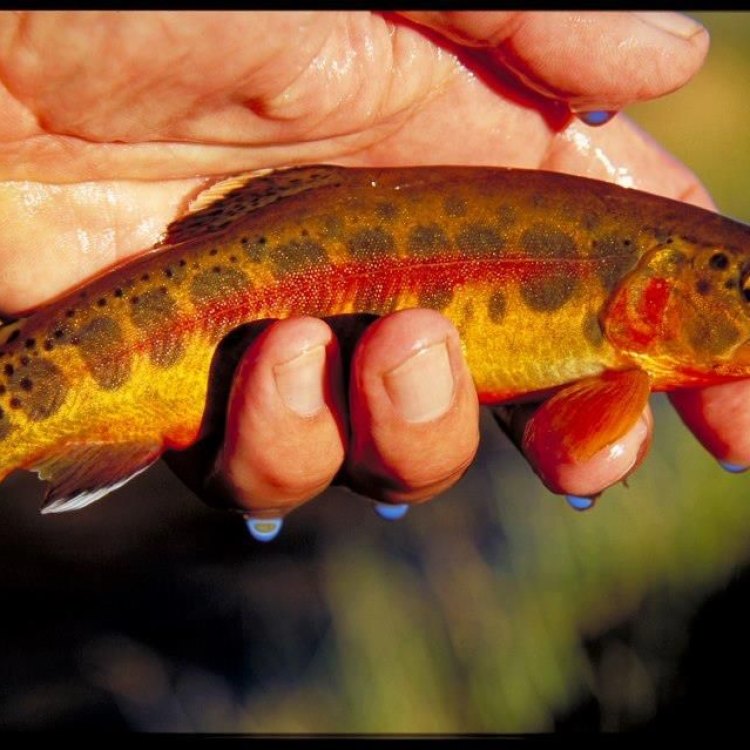
Oncorhynchus mykiss aguabonita
The Golden Trout: California's Shining Jewel
Nestled in the streams and lakes of the Sierra Nevada mountain range in California, lives a shimmering gem of the aquatic world - the Golden Trout. This native species is not only a symbol of the state but also a prime example of nature's beauty and resilience. From its unique physical features to its vital role in the ecosystem, the Golden Trout has captivated the hearts of many and continues to do so as a popular game fish.The Golden Trout, also known as the Oncorhynchus mykiss aguabonita, was first discovered in the 1850s by a group of prospectors in the Kern River drainage system PeaceOfAnimals.Com. However, it wasn't until 1947 that it was officially recognized as the state fish of California. Its striking golden color with red and black markings truly sets it apart from other trout species, making it a coveted catch for anglers. But there's more to this fish than just its appearance.
Size and Reproduction:
The Golden Trout is a relatively small fish, with a typical size ranging from 6 to 12 inches (15 to 30 cm). However, there have been reports of some individuals growing up to 18 inches in length. These fish have an average lifespan of 5 to 7 years, depending on various factors such as water quality, food availability, and competition.
Like most trout species, Golden Trout also reproduce sexually. Spawning occurs in late spring or early summer, usually between May and July. During this time, the female trout digs a shallow nest in the gravel bed of the stream or lake and lays her eggs Great Pyrenees. After that, the male fertilizes the eggs and guards them until they hatch. The young trout then spend their first few days feeding on the egg's yolk sac before venturing out on their own.
Social Behavior:
The Golden Trout is generally a solitary fish, preferring to live and hunt alone. However, during the breeding season, they form temporary groups to aid in spawning. These fish are also known to be very active during the daytime, making them a prime target for both anglers and predators.
Migration and Habitat:
Migration is an essential part of the Golden Trout's life cycle. However, unlike other trout species, their migration pattern is limited within the same water system. They move from smaller streams to larger ones, seeking deeper and colder waters as they mature. The fish also prefer clear, cold, and well-oxygenated waters, making them particularly sensitive to changes in environmental conditions.
The Golden Trout's habitat includes high-elevation streams and alpine lakes in the Eastern Sierra Nevada. These areas are isolated and often hard to reach, providing the fish with a natural protection against human interference. However, with the increase in human activities in these areas, the delicate balance of this sensitive ecosystem is at risk.
Threats and Conservation:
The Golden Trout's natural habitat is under constant threat from various human activities. Habitat degradation, caused by mining and logging, is a significant concern. These activities can lead to increased sedimentation, altered stream flow, and changes in water temperature, ultimately affecting the fish's survival.
Invasive species, such as non-native trout, pose a significant threat to the Golden Trout population. These species compete for resources and can outcompete the native fish, making it difficult for them to survive. Climate change is also a growing concern, as rising temperatures can alter the delicate ecosystem and lead to a decline in the Golden Trout's population.
To ensure the survival of the Golden Trout, various conservation efforts have been put in place. These include habitat restoration projects, reintroduction of the fish in previously occupied areas, and strict fishing regulations. Thanks to these efforts, the Golden Trout is currently listed as Least Concern (LC) on the International Union for Conservation of Nature (IUCN) Red List.
Ecosystem Impact and Human Use:
Though small in size, the Golden Trout plays a crucial role in the ecosystem. As a predatory fish, it feeds on smaller aquatic creatures, helping to maintain a balance in the food chain. It is also an important prey species for larger fish and birds such as eagles and ospreys, making it an invaluable part of the ecosystem.
But the Golden Trout is not just a vital component of the ecosystem; it also holds significant value for humans. It is a popular game fish, attracting anglers from all over the world. Its striking appearance and challenging catch make it a prized possession for many fishing enthusiasts. However, it is important to note that proper fishing practices, such as catch-and-release, are crucial in maintaining a healthy and sustainable population of the Golden Trout.
Interesting Facts:
Apart from its official title as the state fish of California, the Golden Trout has some other interesting facts that make it stand out. Did you know that it is one of only two species of trout that are native to California? The other is the California Golden Trout, which is also a subspecies of the rainbow trout.
Another interesting fact about the Golden Trout is that it has been found as high as 12,000 feet in elevation, making it one of the highest living fish in the world. It is a testament to the fish's adaptability and resilience in harsh conditions.
Predators:
Like most fish, the Golden Trout also has its share of predators. Birds of prey, such as bald eagles and ospreys, are known to feed on them. Larger fish, including other trout species, also pose a threat to their survival. However, with their swift swimming abilities and excellent camouflage, the Golden Trout can escape most of these predators.
In conclusion, the Golden Trout is more than just a state fish of California; it is a shining jewel of the Sierra Nevada mountain range and a symbol of nature's beauty and resilience. Its unique physical features, crucial role in the ecosystem, and popularity as a game fish make it a fascinating species to behold. However, as with any natural resource, it is our responsibility to protect and preserve it for future generations to enjoy. Let's ensure the Golden Trout continues to shine bright and thrive in its natural habitat.
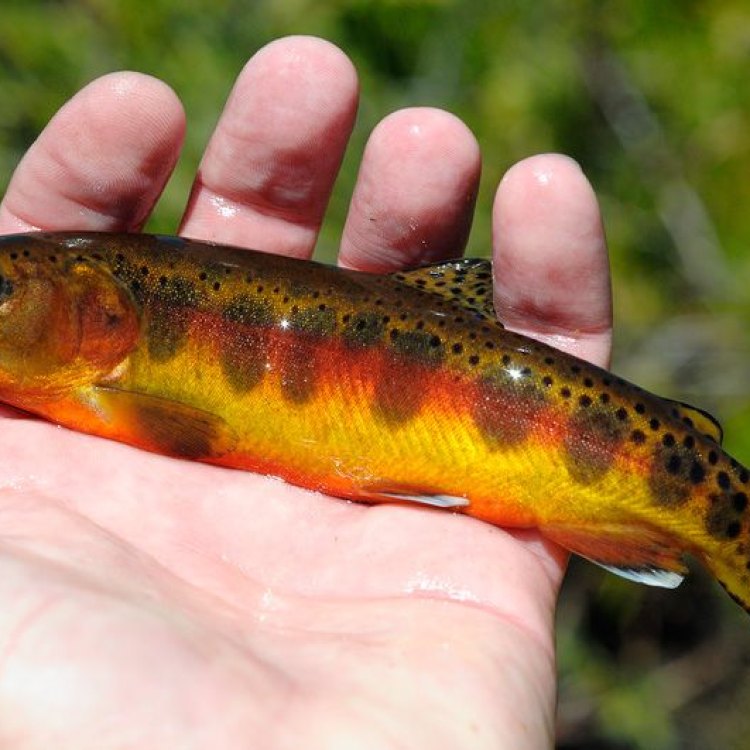
The Majestic Golden Trout: A Gem in the Sierra Nevada Mountains
Disclaimer: The content provided is for informational purposes only. We cannot guarantee the accuracy of the information on this page 100%. All information provided here may change without prior notice.

